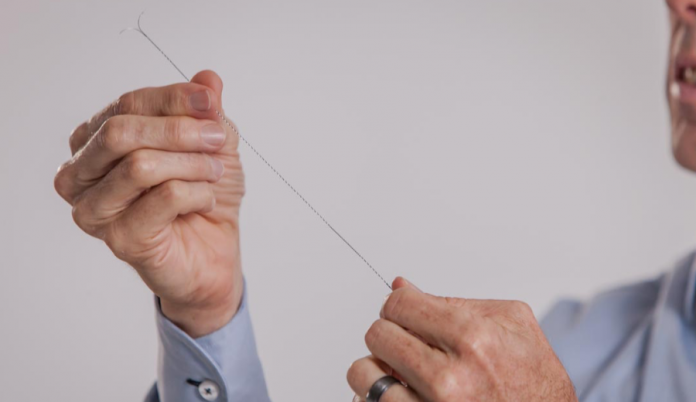Gary Davies, from Sandvik Materials Technology, explains how medical wires are helping patients monitor blood glucose levels without the need for daily testing
According to the charity Diabetes UK, a person is diagnosed with diabetes every two minutes. Diabetes is a life-long disease that can be very dangerous if blood sugar levels are not monitored frequently and adjusted with insulin. However, the constant management of diabetes can require a significant lifestyle change, therefore, negatively affecting the patient’s quality of life.
Electronic medical devices are improving diabetes management options, and progress has relied strongly on advancements in signalling technology involving medical wires. Medical wires used as the sensing device in continuous glucose monitoring (CGM) devices are allowing patients’ glucose levels to be monitored continuously, unlike the traditional method of finger pricking at intervals.
Using the finger prick method to keep track of glucose levels is disruptive to the patient’s daily routine and can be particularly uncomfortable for young children. Frequent tests can interfere with many aspects of the patient’s life, including work schedules, sleeping routines and travel plans.
If the patient is a child, the tests can mean they miss out on school time or their extracurricular activities are disrupted. In addition, the parent must often take on most of the responsibility, which can be a demanding job that strains the whole family.
Down to the wire
A CGM device can alleviate a large amount of the stress caused by glucose management, by measuring tissue glucose automatically 24 hours a day. The device can give a clear view of the patient’s glucose value at any time, and also the trend direction the value is moving in.
A CGM device is comprised of three components — the monitor, the transmitter and the sensor. The sensor is among the most critical parts of the CGM, and its size is thinner than that of a needle. The body’s interstitial glucose level, the glucose found in the fluid between the cells, is measured by the sensor every few minutes. It does this by measuring a chemical reaction involving the enzyme glucose oxidase.
Glucose oxidase catalyses the oxidation of glucose into two compounds, the most important of which here being hydrogen peroxide. The hydrogen peroxide produced reacts with the platinum-based sensor, generating electrical signals that are transmitted through a tiny wire. A higher electrical current indicates higher levels of glucose.
While more commonly found in consumer electronics, the type of wire that transmits the device’s electrical currents is an integral component, which is inserted under the skin of the patient’s arm. The wire used must harness the power of microtechnology, requiring a high quality and small size to be used in the medically implanted device.
In a CGM, the wire is not simply a device that enables other functions in the medical devices to work. The wire actually works as the sensor — it’s the business end of the CGM device.
Alongside the CGM, patients can have an insulin pump attached to their stomach, which automatically delivers the right dose of insulin according to the measurements the associated app recommends.
A life-changing combination
A CGM system can provide diabetes patients with a new lease of life. Blood glucose levels can be constantly monitored and registered in a smartphone app, allowing the patient and their family to benefit from newfound freedom and spontaneity.
The finger prick method of monitoring requires patients to constantly think about their condition and the next actions they should take to prevent medical complications. Without an automatic and holistic system, the frequent monitoring of blood sugar levels can be a never-ending dance between controlling diet and insulin injections to keep blood sugar at a steady level.
A CGM system can provide patients and their families with reassurance, and this can be enhanced by the integration of an alarm function. An alarm provides the patient with peace of mind that, whether they’re doing activities such as sports or sleeping, they will be alerted if blood sugar levels get too high or low — removing constant worry.
The freedom and autonomy that a CGM provides is life-changing for diabetes patients. Advanced medical wires are a vital component of continuous glucose monitoring technology, providing constant, real-time information about blood sugar levels to help patients take control of their diabetes, allowing them to get the most out of life.








